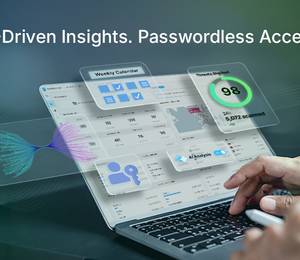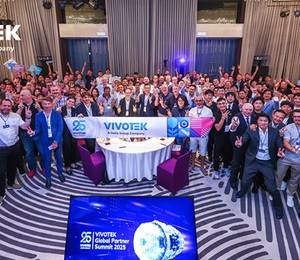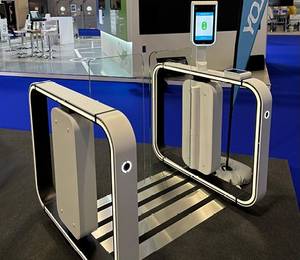As 2022 draws to a close, it’s time to look ahead to what’s next for the IT monitoring industry. Here are some key forecasts from Paessler, the monitoring experts for IT infrastructures and networks, for the IT landscape in 2023:
Digitalization will continue to create new responsibilities for IT.
Whether it is in factory floors, hospitals, energy sources or data centres, previously analogue devices and systems that were isolated from the IT world are now generating data compatible with digital systems, expanding the limits to which we can analyze and interpret data.
While industries are clamouring to address all the challenges that have come up with the rising convergence of IT and OT (operational technology), it is also equally important to consider the monitoring of the ecosystem. A major challenge here is to bring these multiple metrics and their different monitoring systems into a single view. There will be an increased focus on IT monitoring tools that will enable organizations to keep track of the changes in the ecosystem and provide a consolidated view of the data collected, simplifying the data analysis and decision-making process. As we stretch the limits of IT/OT convergence, we will need solutions that can monitor these devices and infrastructures.
Monitoring solutions will keep playing a vital role in the data centre sector.
As multinationals continue to relocate their data centres to Southeast Asia (SEA), there is little doubt that the region has become a hotspot for data centre investment. In the second half of this year, Singapore’s government lifted its moratorium on data centre construction. With the Satu Data Indonesia (SDI) 2022-2024 action plan, the Indonesian government is also focusing on expanding the implementation of data structures such as data centres. At the same time, the Thailand data centre market is expected to reach US$1.03 billion by 2027.
With data centres – and the subsequent infrastructure and devices that are often spread over multiple geographic locations – comes the challenge of monitoring them. Because data centres have become an essential infrastructure for organizations across various industries, their failure means that businesses are often left inoperable. In order to ensure efficient operation, it has become paramount to keep a constant eye on the various technical equipment, operational facilities, and security, which will minimize data centre downtime. As the data centre sector continues to play a major role in multiple industries and across the SEA region, so will the monitoring solutions.
Remote monitoring from the cloud will be on the rise – but need differentiation.
Today, organizations are increasingly turning to the cloud, with 76% of Asia Pacific businesses planning to increase their cloud services in the next 12 months. An important aspect of cloud migration is strengthening cloud-first strategies by ensuring that various applications and IT processes can be incorporated into a cloud computing environment.
Additionally, monitoring services being offered from the cloud are increasing. And this is applicable to monitoring cloud-based components such as websites, cloud services, and cloud-based applications. When it comes to on-premises monitoring, the monitoring solutions from the cloud may face some issues as they depend on a superfast and reliable internet connection to avoid false monitoring results due to time lags in data transmission. It’s important to take this into account, and organizations will need to go with the right mix of cloud-based and on-prem monitoring tools.
A renewed focus on improving security in the IoT environment
Given the significant rise in data breaches, ransomware attacks, and other cyber-attacks on various industries across the world, it really is no surprise that businesses across the globe are turning their attention to further strengthening their cybersecurity initiatives and strategies. However, one noticeable gap in all of this is the Internet of things (IoT) security gap.
The rapid growth of adoption and capabilities of IoT technology has skyrocketed over the past few years. By 2025, IoT spending in the Asia Pacific is predicted to reach US$437 billion. Any device that is connected to the internet is susceptible to some form of cyberattack. Apart from the fact that IoT devices inherently have very little built-in security and that patch management can be difficult because of their physical nature, the interconnectedness of these devices, and the subsequent complex environments, pose grave security threats across the network.
Monitoring is a vital part of every security strategy, ensuring that all classic security tools like firewalls, unusual detection systems or privileged access management (PAM)-tools work flawlessly. But especially in the IoT world, monitoring has another important task. Suitable monitoring solutions can ensure physical security by integrating door-locking systems, security cameras, smoke detectors or temperature sensors into central monitoring. And businesses will look at taking these facets into consideration going forward.
Distributed Architecture will continue to become the new normal.
With concepts of hybrid working, remote offices and working from home becoming common, organizations are storing data in the cloud instead of having centralized data infrastructures, thereby moving toward networks using Software as A Service (SAAS) and Software-Defined WAN (SDWAN). With distributed architectures gaining prominence, it is critical to have the right distributed monitoring strategy in place that can be effective. Given this scenario, there will be a high demand for solutions which will provide organizations with a unified monitoring overview of multiple IT infrastructures providing benefits such as an end-user view of network performance, troubleshooting, simplifying the transition to the cloud and reducing bandwidth requirements.












